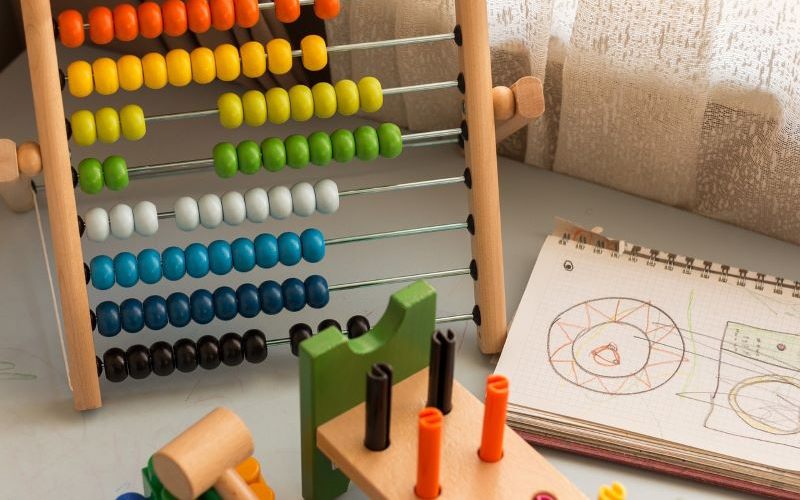During COVID, virtual inspections became the norm. While they were useful, they didn't always reveal hidden defects like plumbing issues, noise levels, or structural damage.
But even now, with open homes back in full swing, some buyers are still skipping in-person inspections - often to their detriment. Photos and virtual tours can only show so much, and without physically stepping inside, you might miss crucial details like natural light, ventilation, street noise, or signs of structural issues.
So, what exactly should you be looking for before signing on the dotted line? Here's a comprehensive checklist to help you inspect a property and avoid any costly surprises down the track.
Property inspection checklist
Here's a comprehensive home inspection checklist to use before making an offer.
Water pressure and drainage
Plumbing issues can be expensive to fix, and weak water pressure could signal old pipes or poor drainage.
-
Check the toilets all flush
-
Turn the taps on and off
-
Check the water pressure in the showers and bath
-
Check for leaks, pooling around drainage
-
Check the hot water in bathrooms
-
Look for water stains under sinks, which might indicate slow leaks
-
Check the hot water system's age and condition - old systems may need costly replacement
-
Test the drainage by running water in sinks and watch how fast it drains
Windows and doors
Faulty doors and windows could mean poor insulation and higher energy bills. If the home is in a bushfire-prone area, ensure windows meet the Bushfire Attack Level (BAL) rating.
-
Open and close to check they work
-
Check the locks on the doors and windows
Flooring
Foundation issues are expensive to repair, and bad smells could mean mould or pet damage. Expansive clay soils in Melbourne and Adelaide can cause floors to crack or shift over time.
-
Check if the carpet is stained, frayed or ripped
-
Check the edges of the wall and floor meet flush
-
Uneven floors or doors that don't shut properly - these can signal foundation movement
-
Note any stains, chips or scratches on wooden floors
Electricity
Old wiring could lead to fire hazards or require an expensive electrical upgrade. If the home was built before the 1970s, it may have old fuse boxes that need upgrading.
-
Check the power points are working
-
Turn light switches on and off
-
Note if they are energy saving bulbs, smart home etc.
-
Age of the electrical panel and wiring (older homes might still have outdated fuse boxes)
-
Check if the house has smoke alarms, this is legally required
-
Look for exposed wiring or scorch marks around outlets, which could signal past electrical faults
Kitchen and storage
Storage is something buyers often overlook but regret later. In Brisbane and Sydney, cockroaches thrive in warm climates, so check kitchen areas carefully.
-
Open and close all cabinets and drawers
-
Check for chips, missing handles etc.
-
Check kitchen benchtops for stains, cracks, or water damage.
Walls
-
Check paint, scratches, especially around windows and door frames.
-
Look for fine cracks on the internal wall plastering
-
Major cracks in foundations, ceilings, or load-bearing walls -these could indicate serious structural problems
-
Signs of past leaks, like water stains on ceilings or walls.
Outdoor Areas & Roof
A neglected roof could mean expensive repairs down the track. In cyclone-prone areas (QLD, NT, WA), ensure the roof meets cyclone ratings.
-
Walk around the backyard, patio, or balcony for signs of damage
-
Check fences and gates - are they sturdy and secure?
-
Look for guttering issues, missing roof tiles, or rusted downpipes
-
Sagging rooflines (a potential indicator of structural issues)
-
Insulation and ventilation in the attic or ceiling space, which impacts heating/cooling efficiency and can prevent mould growth.
Location
If you are happy with the physical components of the property, make sure it's in a location that suits you. That might mean close proximity to schools, shops, cafes, gym etc. These aspects will also add value to the property down the track when you consider selling.
Even if the house itself is perfect, a bad location can be a dealbreaker. Check your council's zoning laws-you don't want a high-rise apartment built next door later!
-
Visit at different times of the day - is it noisy at night?
-
Check how close it is to schools, shops, cafes, and public transport
-
Research crime rates in the area
-
Ask about development plans (a quiet street today might be noisy in five years)
Don't skip the building and pest inspection
So now you have personally walked through the property and noted any small issues. The next step is to get a building and pest inspection.
The purpose of a building and pest inspection is to identify any issues with the property you may have missed - structurally or otherwise - so that you're fully informed about the condition of your new asset. With a building and pest report, you won't be caught out by any nasty, unexpected surprises.
Issues that could pop up on a building and pest report include:
-
Structural issues with the building
-
Any evidence of termite infestations/other pest infestations
-
Holes or cracks in the roof or walls not visible in plain sight
-
Any mould, rust, stains, dampness, rotting timber, or any other kind of damage to the property
-
Doors, windows, or any other feature of the home not working correctly
-
Any potential electrical, gas, or water issues
-
Any other issue with the property identified by the inspector
Get a land surveyors report
Land surveying is an important part of a property inspection checklist.
It allows you to understand the boundaries of your yard, house and land, as well as contours, drainage and plumbing that may go underneath your home.
It helps should you consider renovations down the track, as well as any renovations done by neighbours that might impact your land. You don't want your neighbours planting trees that will drop branches into your property, have roots pushing up your driveway, or putting in a new pool that will disrupt the foundations of your house.
Pre-settlement inspection (the final check before you buy)
This inspection is the final inspection before settling on your new home. It's an important step as you want to make sure the previous owners have taken their belongings, and the house is in the same condition or better than when you first walked through.
Checklist
-
Check the home is vacant
-
Ensure no rubbish or belongings have been left by previous owners
-
Ensure the conditions of the contract have been fulfilled like painting, cleaning, gardening etc.
Once you settle, any problems will become your responsibility.
What happens if you find something wrong with the property?
If you find something wrong with the property during your inspection, raise it with your conveyancer immediately. They can negotiate with the seller to either fix the issue before settlement or adjust the sale price to cover the cost of repairs. In some cases, a special condition can be added to the contract, ensuring that necessary repairs are completed before you take ownership.
It's important to stay level-headed, even if you're keen to move in. A pre-settlement inspection allows you to confirm that the property is in the same condition as when you first viewed it. If significant new damage has occurred or agreed-upon repairs haven't been made, you have the right to dispute it before finalising the purchase.
For serious issues like structural damage, termites, or faulty wiring, getting professional advice is crucial. If the problem is extensive and the seller refuses to negotiate, you may need to reconsider the purchase. In some states, contracts include a building and pest inspection clause, which allows you to withdraw from the sale if major defects are found. Taking the time to address issues upfront can save you thousands in unexpected repairs.
First published on March 2022
Picture by Gus Raballo on Unsplash

Ready, Set, Buy!
Learn everything you need to know about buying property – from choosing the right property and home loan, to the purchasing process, tips to save money and more!
With bonus Q&A sheet and Crossword!



 Denise Raward
Denise Raward

 Harrison Astbury
Harrison Astbury
 Brooke Cooper
Brooke Cooper
 Alex Brewster
Alex Brewster

